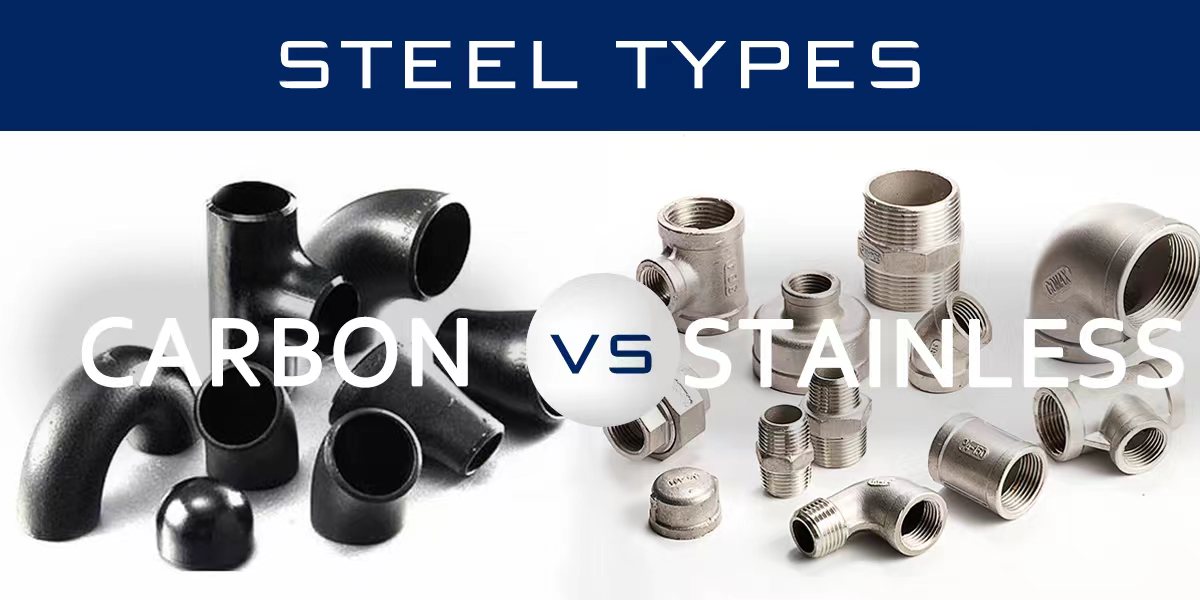Choosing the right valve body material (PVC, steel or brass) will help keep your piping system in better condition and extend its life.
However, one of the most important elements of a safe, durable, compliant and easy-to-maintain piping system is the material composition of the valve body. The valves withstand extreme pressure and temperature conditions. It must withstand the pressure and load of aggressive and abrasive gases, suspensions and liquids. Due to differences in composition, one valve material is often more suitable for a project than another. To ensure that the best valve material for a specific application is installed, it is important to understand the characteristics, advantages and disadvantages of each material.
Steel comes in many grades, but the two types most commonly used in industry are stainless steel valves and carbon steel valves.
Carbon steel, also known as low alloy steel, is a mixture of carbon, iron and other alloying elements. Depending on the exact amount of carbon in carbon steel, different grades are available, from low carbon steel to medium carbon steel, high carbon steel and ultra high carbon steel. The higher the carbon content, the harder the valve material. However, as hardness increases, the material loses its ductility and malleability. Low and medium carbon steels are ductile and can be designed for specific applications.
Carbon steel is used in various industries such as hydraulic processes, chemical plants and power plants. Carbon steel valves are used in hydraulic applications due to their high resistance to the corrosive effects of water and other liquids. Due to its higher carbon content it has very good mechanical properties, making the valve assembly stronger and more durable. Carbon steel valves offer superior tensile strength and impact resistance, making them ideal for high-pressure industrial applications.
Corrosion is one of the major problems affecting valve body materials. Under the influence of high temperatures and large pressure differences, corrosion intensifies, which leads to cavitation erosion. However, under the right conditions, stainless steel is a more durable valve material than other materials and can resist corrosion. This is due to the presence of chromium, which gives stainless steel an oxidized, corrosion-resistant surface.
Stainless steel valves are an alloy of iron mixed with chromium and nickel and are best suited for high pressure, high temperature applications and harsh environments such as refineries, brewing systems, food processing and marine environments.
Stainless steel valves are commonly used in the food industry, especially direct contact valves. Due to strict hygiene standards, aggressive and harsh cleaning agents are required to keep systems clean and food safely handled, and any materials used in these systems must be highly resistant to these agents.
In addition, stainless steel can be electropolished to smooth out surface imperfections that would otherwise encourage bacterial growth, leaving a very clean surface. Food, beverage and pharmaceutical manufacturing facilities benefit from this sanitizing function of stainless steel valves. Similarly, pulp and paper mills use stainless steel valves due to their high chemical resistance.
Compared to stainless steel valves, carbon steel valves contain no chromium and are therefore susceptible to rust, corrosion, discoloration and staining. Although stainless steel valves are more expensive, they are durable, durable, and generally very resistant to corrosion. This extends the life of stainless steel valves, making them an economical, low-maintenance choice.
Post time: Jul-04-2024

